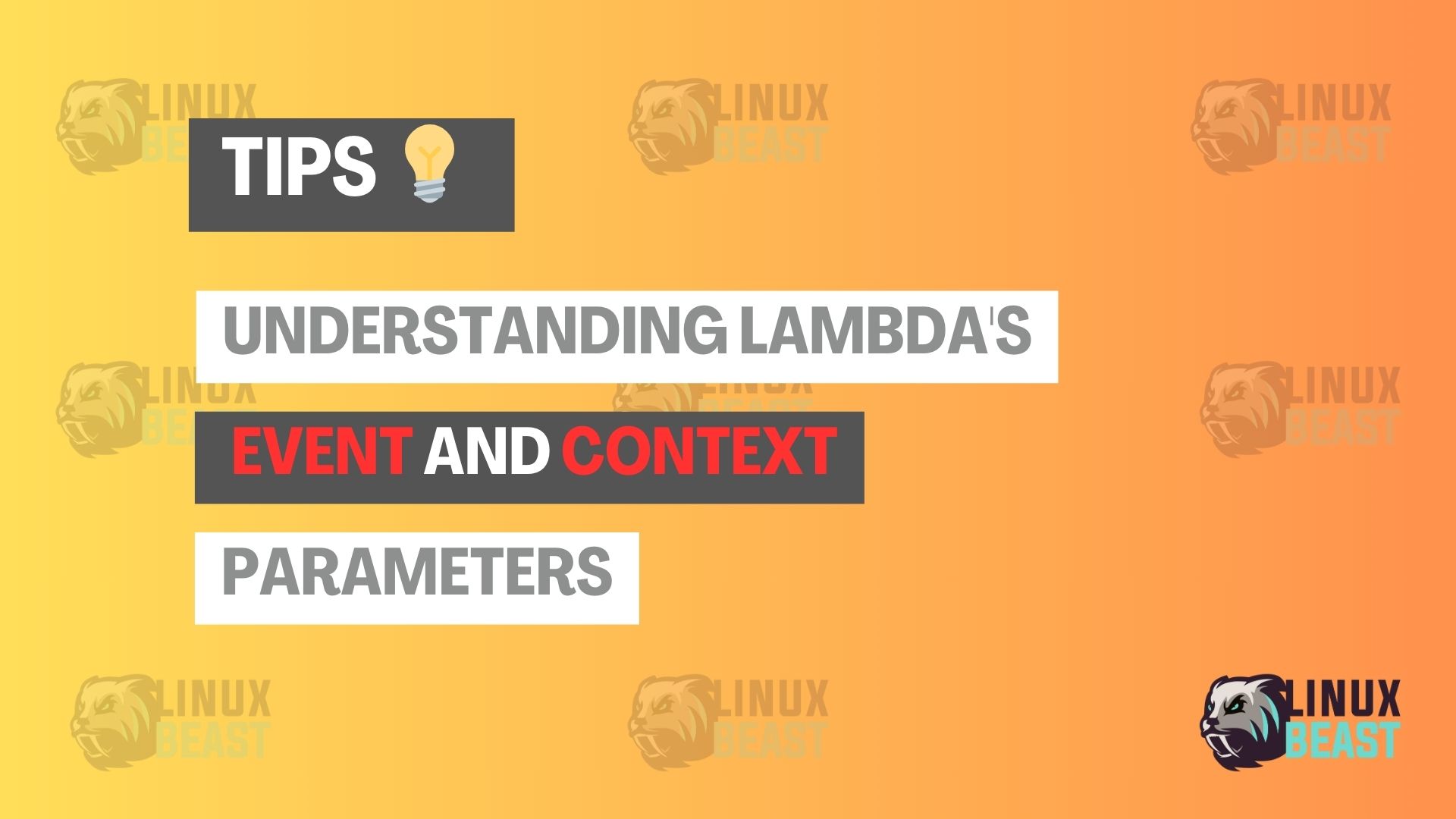So, you’re diving into the world of AWS Lambda, building serverless functions that spring to life with just a trigger. You’ve written your first lambda_handler, and you’re staring at those two mysterious parameters: event and context. What are they, and why do they matter? Don’t worry, you’re not alone! Let’s demystify these core components of Lambda. 🚀
📬The event: Your Lambda’s Inbox
Think of the event parameter as the delivery package for your Lambda function. It’s a Python dictionary containing the data that triggers your function or provides the information it needs to work. The contents of this package? Well, that depends entirely on who sent it.
| Event Source | Description |
|---|---|
| API Gateway | If your Lambda is serving an API, the event will contain all the details of the incoming HTTP request: headers, query parameters, request body, and more. |
| S3 | If your Lambda is triggered by an S3 object upload, the event will hold information about the bucket and the uploaded object. |
| SNS | If your Lambda is triggered by an SNS message, the event will contain the message itself. |
| Scheduled Events (CloudWatch Events) | If your Lambda is running on a schedule, the event will contain information about the event trigger. |
| SQS | If your Lambda is triggered by an SQS message, the event will contain the messages from the queue. |
| And More | There are more event sources that can trigger your Lambda function. |
Essentially, the event is where your Lambda function gets its marching orders. You’ll spend most of your time extracting the relevant data from this dictionary to perform your function’s logic.
Example Use Case: Extracting Request Data from API Gateway 📑
import json
def lambda_handler(event, context):
http_method = event['httpMethod']
path = event['path']
query_params = event['queryStringParameters']
body = json.loads(event['body']) if event['body'] else {}
print(f"HTTP Method: {http_method}, Path: {path}")
print(f"Query Parameters: {query_params}")
print(f"Request Body: {body}")
return {
'statusCode': 200,
'body': json.dumps({'message': 'Data processed'})
}
Another Example Use Case: Processing S3 Object Creation Events 🏞️
def lambda_handler(event, context):
bucket_name = event['Records'][0]['s3']['bucket']['name']
object_key = event['Records'][0]['s3']['object']['key']
print(f"Object uploaded to: s3://{bucket_name}/{object_key}")
# Perform further processing on the S3 object
return {
'statusCode': 200,
'body': 'S3 object processed'
}🛠️ The context: Your Lambda’s Runtime Environment
The context parameter, on the other hand, is like a backstage pass to your Lambda’s execution environment. It’s a Python object that provides runtime information about the function’s execution.
Here’s a glimpse of what you’ll find inside:
| Context Parameter | Description |
|---|---|
context.aws_request_id | A unique ID for each invocation, invaluable for debugging. |
context.log_group_name and context.log_stream_name | The CloudWatch Logs group and stream names, where your function’s logs are stored. |
context.function_name and context.function_version | The name and version of your Lambda function. |
context.invoked_function_arn | The full ARN of the invoked function. |
context.memory_limit_in_mb | The configured memory allocation for the function. |
context.get_remaining_time_in_millis() | A crucial function that tells you how much execution time is left before your Lambda times out. |
While you won’t use the context parameter as frequently as the event, it’s essential for tasks like:
- 📑 Logging: Including the
aws_request_idin your logs makes it much easier to trace specific invocations. - 🕓 Monitoring: Checking the remaining execution time to prevent timeouts.
- 🏷️ Accessing runtime information: Grabbing the function name or version for logging or other purposes.
Example Use Case: Logging Request IDs and Checking Remaining Execution Time ⏲️
def lambda_handler(event, context):
request_id = context.aws_request_id
remaining_time = context.get_remaining_time_in_millis()
print(f"Request ID: {request_id}")
print(f"Remaining Time: {remaining_time} ms")
print(f"Function Name: {context.function_name}")
print(f"Function Version: {context.function_version}")
print(f"Memory Limit: {context.memory_limit_in_mb} MB")
print(f"Log Group Name: {context.log_group_name}")
print(f"Log Stream Name: {context.log_stream_name}")
print(f"Invoked Function ARN: {context.invoked_function_arn}")
# Your function logic here
return {
'statusCode': 200,
'body': 'Runtime information logged'
}📚 Key Takeaways:
- The
eventparameter is the data that triggers your Lambda function. Its content varies depending on the event source. - The
contextparameter provides runtime information about your Lambda function’s execution environment. - Understanding both parameters is crucial for building robust and efficient Lambda functions.
By mastering the event and context parameters, you’ll be well on your way to creating powerful and scalable serverless applications with AWS Lambda. Happy coding!🎉

